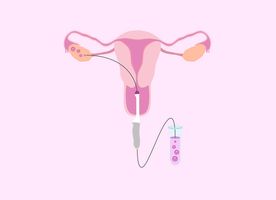Reproductive Medicine in Philippines
Search and Compare the Best Clinics and Doctors at the Lowest Prices for Reproductive Medicine in Philippines
Manila Genitourinary Clinic





Reproductive Medicine at Manila Genitourinary Clinic in Metro Manila, Philippines
Asian Hospital and Medical Center





Reproductive Medicine at Asian Hospital and Medical Center in Metro Manila, Philippines
The Medical City





Reproductive Medicine at The Medical City in Metro Manila, Philippines
St. Luke's Medical Center





Reproductive Medicine at St. Luke's Medical Center in Metro Manila, Philippines
Medhub Multispecialty and Diagnostic Clinic





Reproductive Medicine at Medhub Multispecialty and Diagnostic Clinic in Zambales, Philippines
World Citi Medical Center
Precious Diaz OB-GYN Clinic and Ultrasound




Reproductive Medicine at Precious Diaz OB-GYN Clinic and Ultrasound in Agusan del Norte, Philippines
Dr. Pearlie Siy-Salazar OB-Gyn and Ultrasound Clinic

Reproductive Medicine at Dr. Pearlie Siy-Salazar OB-Gyn and Ultrasound Clinic in Metro Manila, Philippines
Manila Kidney and Prostate Care Clinic





Reproductive Medicine at Manila Kidney and Prostate Care Clinic in Agusan del Norte, Philippines
Our partner clinics in Philippines are accredited by the following associations






















































































































































No Time?
Tell us what you're looking for and we'll reach out to the top clinics all at once
WHY US?






















































































































































No Time?
Tell us what you're looking for and we'll reach out to the top clinics all at once





Reproductive medicine is a field of medicine that deals with the prevention, diagnosis, and management of male and female reproductive issues. It encompasses the prevention and assessment, as well as the treatment and prognosis of a wide variety of reproductive conditions. The main goal of reproductive medicine is to improve or maintain the female and male reproductive systems. Reproductive medicine specialists particularly treat and advise on any issues impacting a person’s or a couple’s ability to conceive. They treat issues of puberty, sexual education, family planning, birth control, infertility, sexual dysfunction, and reproductive system disease, such as:
- Infectious diseases, such as reproductive tract infections (RTIs) and sexually transmitted infections (STIs).
- Cancer that affects the reproductive system, such as breast cancer, ovarian cancer, penile cancer, and prostate cancer.
- Conditions that affect fertility, such as polycystic ovary syndrome (PCOS), endometriosis, fibroids, hypothyroidism, cryptorchidism, vasectomy, and retrograde ejaculation.
- Congenital abnormalities, such as imperforate hymen and epispadias.
- Endocrine disorders, such as teratoma, hypogonadism, idiopathic hirsutism, androgen insensitivity syndrome, ovarian cysts, and hypopituitarism.
Tests and treatments that reproductive medicine may perform include:
- Full medical history assessment
- Physical examination
- Blood tests
- Imaging techniques, such as pelvic ultrasounds
- Investigations of semen samples
- Ovulation induction
- Assisted reproductive technology (ART) such as in-vitro fertilization (IVF), fertility medication, artificial insemination (AI), embryo transfer, and frozen embryo replacement (FER)
- Open surgery
- Laparoscopic surgery
- Prescribing medication, such as antibiotics for bacterial infections or highly active antiretroviral therapy (HAART) for the HIV virus.
Reproductive medicine is a multidisciplinary branch of medicine that combines physiology, endocrinology, and anatomy, as well as some aspects of biochemistry and molecular biology. Reproductive medicine also overlaps with other branches of medicines, such as gynecology, urology, obstetrics, and psychiatry.
How Long Should I Stay in Philippines?
Your length of stay in Philippines depends on your specific condition and the type of test and/or treatment you underwent. In general, it is advisable that you stay in Philippines for at least 1-3 weeks, although you may be able to travel home within 1 to 2 days after some diagnostic tests. During your stay, you will attend follow-up appointments.
What's the Expected Recovery Time?
Your specific condition, the type of test/treatment you underwent, the technique your doctor used, and your overall health determines the recovery time. For open surgery, it may take around 4 to 6 weeks until you are allowed to resume your normal activity and to go back to work. Laparoscopic surgery offers shorter recovery time, usually only 3 to 4 weeks until you can return back to your normal activity level. For non-surgical procedures, such as IVF, you should be able to go back to your normal routine immediately after the procedure.
What Aftercare is Required?
You will be given detailed aftercare instructions that you will need to follow. In most cases, you will attend regular checkups with your reproductive medicine specialist in Philippines or with your local doctor back at home.
What's the Success Rate?
The advancement of reproductive medicine and a better understanding of the human reproductive system has lead to an increased safety and success rate of the reproductive system’s tests and treatments. The field has allowed the development of assisted reproductive technology (ART), resulting in advances in overcoming infertility. ART is also safer than surgical procedures, minimizing the risks that surgical procedures carry.
Are there Alternatives?
Depending on your specific case, you may be able to see a gynecologist, urologist, obstetrician, or even oncologist as the alternative to seeing a reproductive medicine specialist. It is best, however, to talk to your general physician first as they will be able to direct you to the right specialist.
This information has been accurately sourced and verified by a medical professional for its accuracy, however, we strongly recommend you to consult with your doctor before pursuing medical procedures overseas.













